FUROSEMIDE SOLUTION- ORAL
PHONETIC PRONUNCIATION: (fyou-ROW-seh-mide)
COMMON BRAND NAME(S): Lasix
GENERIC NAME(S): furosemide
Uses
USES: Furosemide is used to reduce extra fluid in the body (edema) caused by conditions such as heart failure, liver disease, and kidney disease. This can lessen symptoms such as shortness of breath and swelling in your arms, legs, and abdomen. This drug is also used to treat high blood pressure. Lowering high blood pressure helps prevent strokes, heart attacks, and kidney problems. Furosemide is a "water pill" (diuretic) that causes you to make more urine. This helps your body get rid of extra water and salt.
How to use FUROSEMIDE SOLUTION- ORAL
HOW TO USE: Read the Patient Information Leaflet if available from your pharmacist before you start taking furosemide and each time you get a refill. If you have any questions, ask your doctor or pharmacist. Take this medication by mouth as directed by your doctor, with or without food, usually once or twice daily. It is best to avoid taking this medication within 4 hours of your bedtime to prevent having to get up to urinate. Carefully measure the dose using the special measuring device/spoon that comes with your prescription. Do not use a household spoon because you may not get the correct dose. Dosage is based on your medical condition, age, and response to treatment. For children, the dose is also based on weight. Older adults usually start with a lower dose to decrease the risk of side effects. Do not increase your dose or take it more often than directed. Take this medication regularly in order to get the most benefit from it. To help you remember, take it at the same time(s) of the day as directed. It is important to continue taking this medication even if you feel well. Most people with high blood pressure do not feel sick. Sucralfate, cholestyramine, and colestipol can decrease the absorption of furosemide. If you are taking any of these drugs, separate the timing of each dose from furosemide by at least 2 hours. Tell your doctor if your condition does not improve or if it worsens (for example, your blood pressure readings remain high or increase).
Side Effects
Precautions
Interactions
Overdose
Images
Reviews
Faq for FUROSEMIDE SOLUTION- ORAL
Furosemide Solution- Oral is a medication primarily used to treat fluid retention (edema) in patients with conditions such as congestive heart failure, liver disease, or kidney disorders.
Furosemide belongs to a class of drugs known as diuretics. It helps the kidneys remove excess water and salt from the body by increasing urine production and reducing fluid buildup.
Common side effects that may occur with Furosemide Solution- Oral usage include increased urination, dizziness, lightheadedness, weakness, muscle cramps, nausea, and constipation. However, it is important to note that not everyone experiences these side effects.
Furosemide Solution- Oral should be taken as prescribed by your doctor. It is usually taken once or twice a day with or without food. It is important to follow the instructions provided and not exceed the recommended dosage.
Yes, there are certain precautions and warnings associated with Furosemide Solution- Oral usage. It is important to inform your doctor about any medical conditions you have, especially if you have kidney or liver problems, diabetes, gout, or an allergy to sulfa drugs. Furosemide may interact with other medications, so always inform your healthcare provider about all the medications, supplements, and herbal products you are taking.
Furosemide Solution- Oral should be used during pregnancy only if clearly needed and under the supervision of a healthcare provider. It is not recommended to use Furosemide while breastfeeding as it may pass into breast milk and harm the nursing baby.
If you forget to take a dose of Furosemide Solution- Oral, take it as soon as you remember. However, if it is close to the time for your next dose, skip the missed dose and continue with your regular dosing schedule. Do not take a double dose to make up for a missed one.
Furosemide Solution- Oral may interact with certain medications such as other diuretics, corticosteroids, digoxin, lithium, and certain blood pressure medications. It is important to discuss all the medications you are taking with your doctor or pharmacist to avoid any potential drug interactions.
The onset of action of Furosemide Solution- Oral varies from person to person. It usually starts working within one hour of taking the medication, with peak effects occurring within 1-2 hours. However, it is important to continue taking the medication as prescribed, even if you do not immediately notice any improvement.
Warning
WARNING: Furosemide is a very potent medication. Using too much of this drug can lead to serious water and salt/mineral loss. Therefore, it is important that you are closely monitored by your doctor while taking this medication. Tell your doctor right away if you become very thirsty or confused, or develop muscle cramps/weakness. See also Side Effects section.
Disclaimer
IMPORTANT: HOW TO USE THIS INFORMATION: This is a summary and does NOT have all possible information about this product. This information does not assure that this product is safe, effective, or appropriate for you. This information is not individual medical advice and does not substitute for the advice of your health care professional. Always ask your health care professional for complete information about this product and your specific health needs.
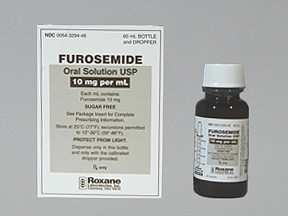
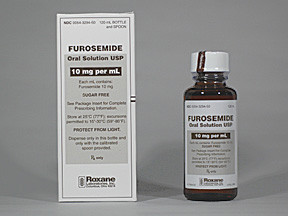
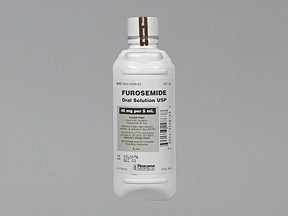
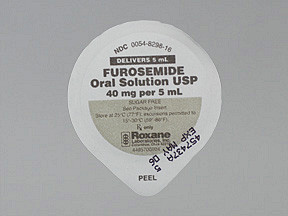

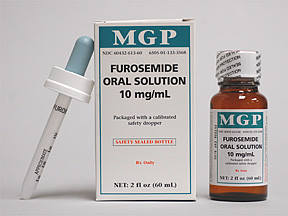
No Reviews Yet